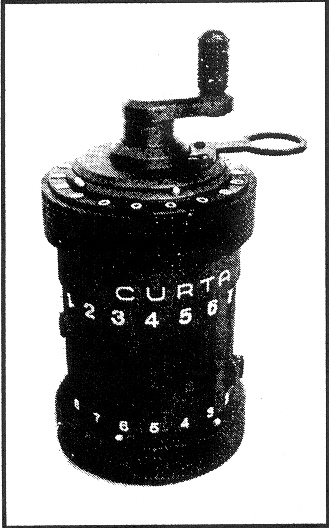
The Curta Calculator, resembling a pepper grinder with numbers, is highly sought after by collectors of slide rules and similar calculating devices. It was produced in two models:
The Curta Calculator came in a can, usually black, two inches in diameter and four inches high. It was manufactured in Liechtenstein (which borders Switzerland).
The inventor, Curt Herzstark, was born in Vienna, Austria, in 1902. He was the son of Samuel Jacob Herzstark who owned and operated Austria Herzstark & Co., manufacturers of office calculating machines. When Curt was young, he was interested in music and was urged by his family to pursue a musical career. However, he was more interested in technical matters. He earned an engineering degree before going to work in his father's factory.
The Herzstarks dreamed of making a portable calculator for travelers. In 1938, they obtained patents on a device named the "Lilliput". It was never manufactured because the small internal parts were then too difficult to produce and some of the necessary materials were prioritized for the war effort.
Because he was Jewish, Curt Herzstark was imprisoned in 1943 in the Nazi concentration camp at Buchenwald. He was treated better than the other inmates because of his engineer- ing background and was given some limited time to work on his own projects. He began to refine the portable calculator his family always dreamed about making. When all the prisoners were released at the end of the war (1945), he escaped from the Soviet occupying forces and returned to Vienna. He carried with him the complete plans for the Curta Device as well as three prototype models.
From 1948 to 1972, 140,000 Curta machines were produced. The advent of the electronic calculator in 1972 doomed the sales of the Curta and the business ended.
The Curta Calculator was, and still is, the smallest mechanical calculator ever produced. It will forever remain a monument to tht? perseverance of its inventor, Curt Herzstark.
-This article was translated from The Liechtensteiner Volksblatt of April 29, 1989. Thanks to PAST members Hilde Bennett for the translation and Al Bennett for the story.